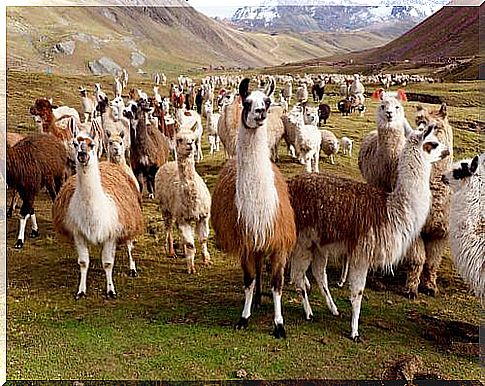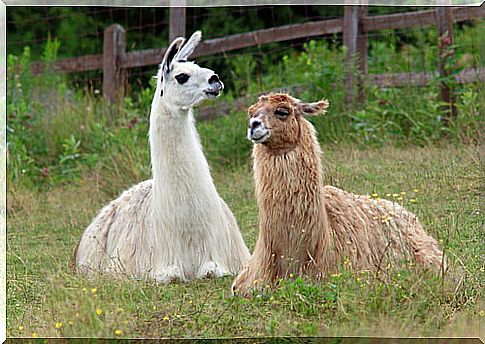The Differences Between Llamas And Alpacas

There are different physical characteristics and forms of behavior that will reveal the differences that exist between these two species belonging to the camel family.
The differences between llamas and alpacas seem subtle if we are not used to seeing these animals that normally live in Peru and Bolivia. However, they are easier to distinguish than they look.
Similarities between llamas and alpacas
Before enumerating their differences, it is pertinent to note their similarities: these animals have a very similar habitat and are closely related to each other.
Both belong to the camel family, and also have strong ties to the vicunas and guanacos, although these two are wild animals.
Both alpacas and llamas have a similar diet: they are herbivores and eat pasture. Both species live in herds and are domesticated animals; live peacefully with man. Now let’s see their differences, which go beyond the physical:
Differences between llamas and alpacas
The differences between llamas and alpacas are obvious to those used to seeing them, although to someone traveling for the first time to the regions where they can be found, they give the impression of being the same animal.
The characteristics that make them different animals also have to do with their relationship to man and their character, not just their physique. Both are docile animals, but they react differently to the approach of strangers.
height and proportions
One of the most notable differences between llamas and alpacas is their size: llamas are noticeably taller than alpacas.
The llamas measure about 1.2 meters to the animal’s withers (the highest point of the mammals before starting the neck), while the alpacas barely reach 90 cm.
Therefore, they are also heavier: llamas weigh more than 100 kilos, while alpacas usually do not exceed 60 kilos.
That is, in terms of size, alpacas are no taller than an adult human being, while llamas, between the neck and ears, exceed their height.
physical differences
If we look closely at the face of these animals, we will find more differences between llamas and alpacas: alpacas are rounder and have less fine features than their cousins, the llamas.

Llamas have more elongated and pointed ears; while alpacas are more rounded. The same goes for the nose: alpacas protrude more and look longer.
Wool layer
As for the relationship of these animals with humans, the difference is also noticeable. Alpaca wool is a highly coveted fiber for being soft and light: not only do they have a thicker and more voluminous layer than llamas, but they also have a more spongy appearance.
On the contrary, as llama wool is coarser and harder to work, they were used as pack animals.
Thus, it also takes advantage of your physical strength. Llamas, therefore, have less wool and a rougher, less delicate appearance than alpacas.
Behavior
The behavior of these two species also varies. Both are herd animals, domesticated, and show curiosity for human beings, but the differences end here.
Alpacas are very shy animals that will flee if any stranger tries to approach. They don’t like working for humans and if they ever feel angry, can… spit! Although harmless, if you’re smart and if it’s possible, you’ll prefer to get away from it.

On the contrary, llamas are more outgoing, but also more stubborn. If a llama feels uncomfortable or is not treated as she likes, she will not hesitate to spit or kick the first person who comes by.
In addition, you may decide not to work for the human being and remain stationary or lie down so that it is impossible to force you to get up.
The differences between llamas and alpacas seem to lie in the small details. Although you just need to know how to notice these differences for them to become obvious.
Tip: if you come across an animal like this and you don’t know what it is, watch its size and ears instead of trying to provoke it, as it may spit on you.









